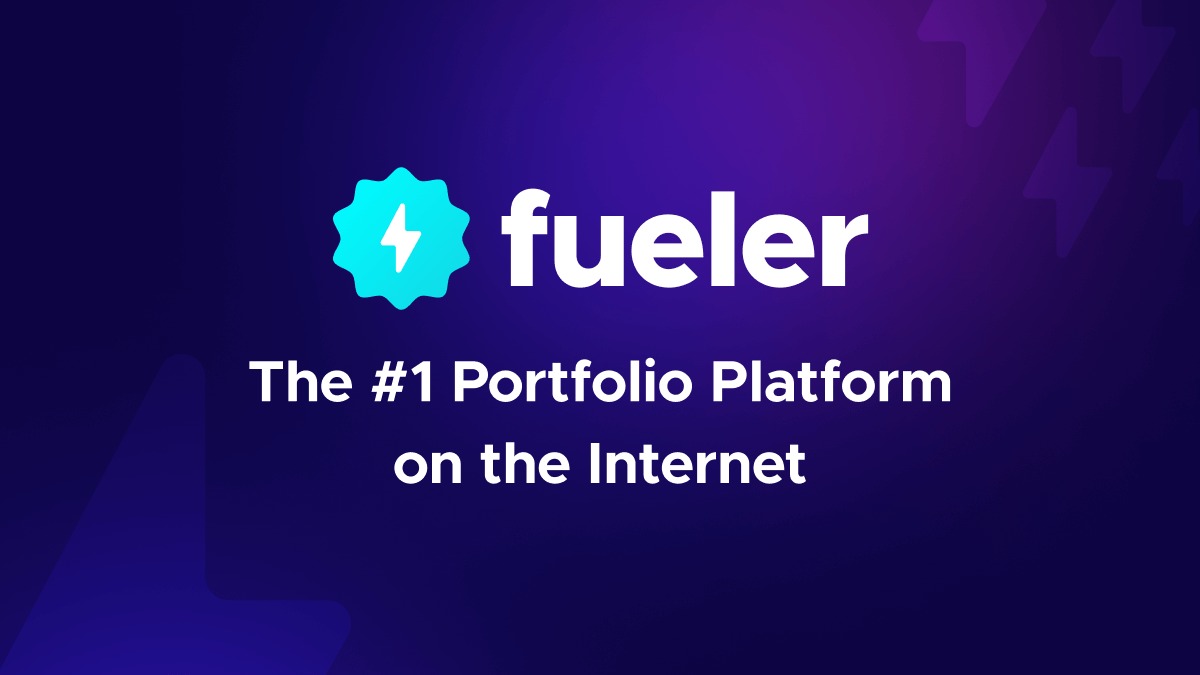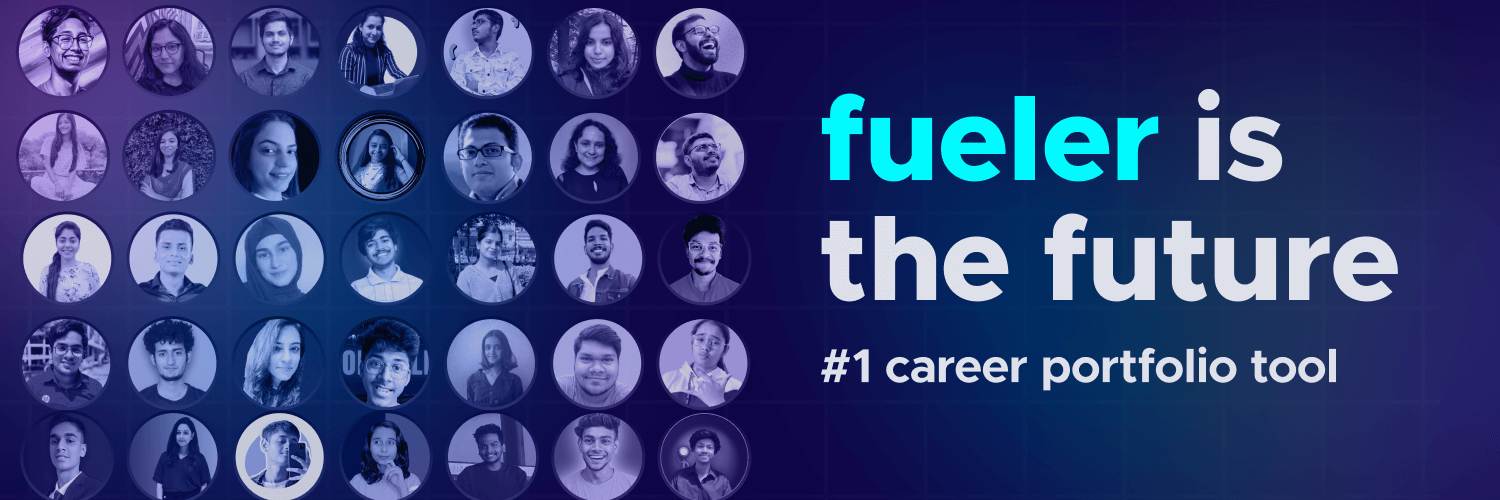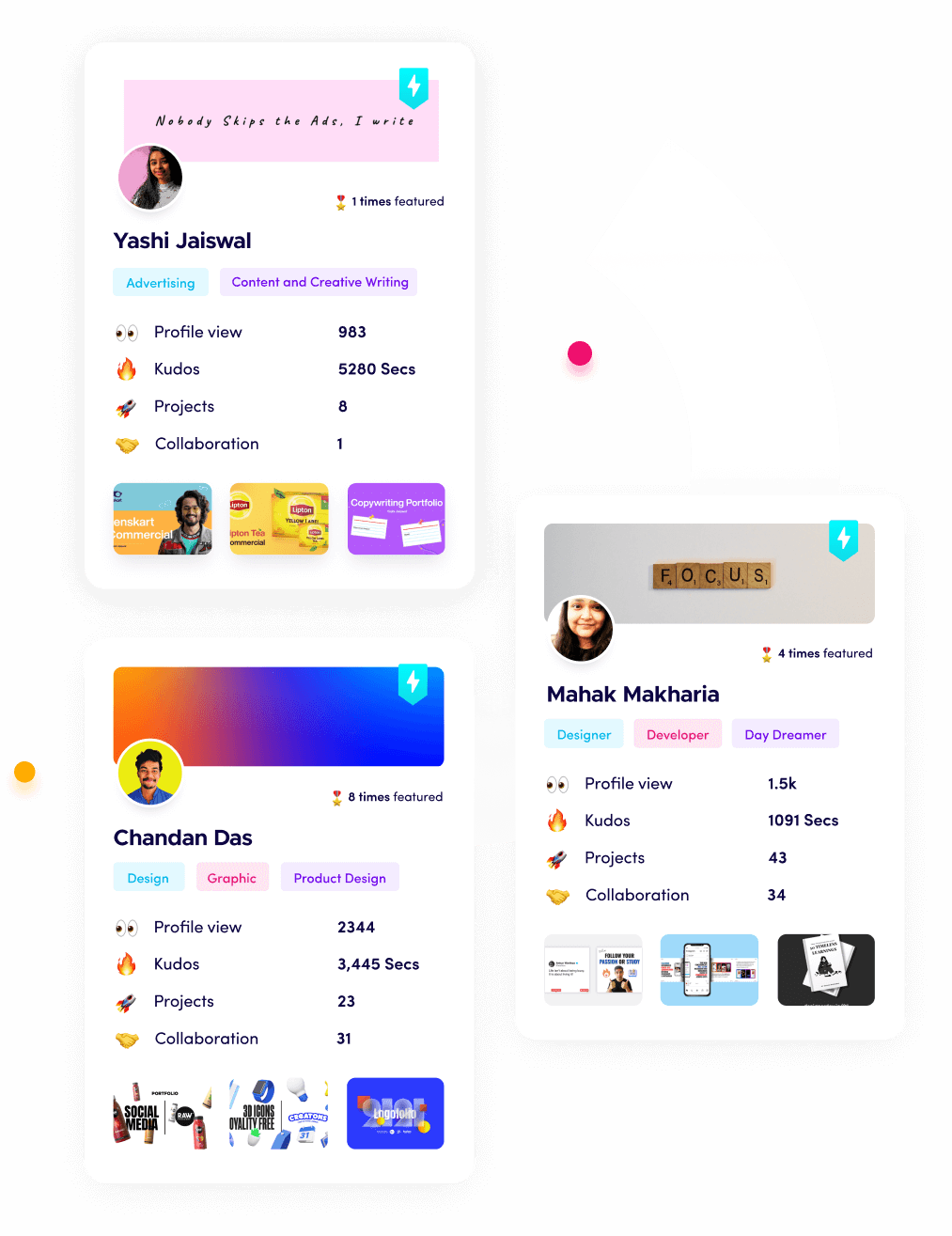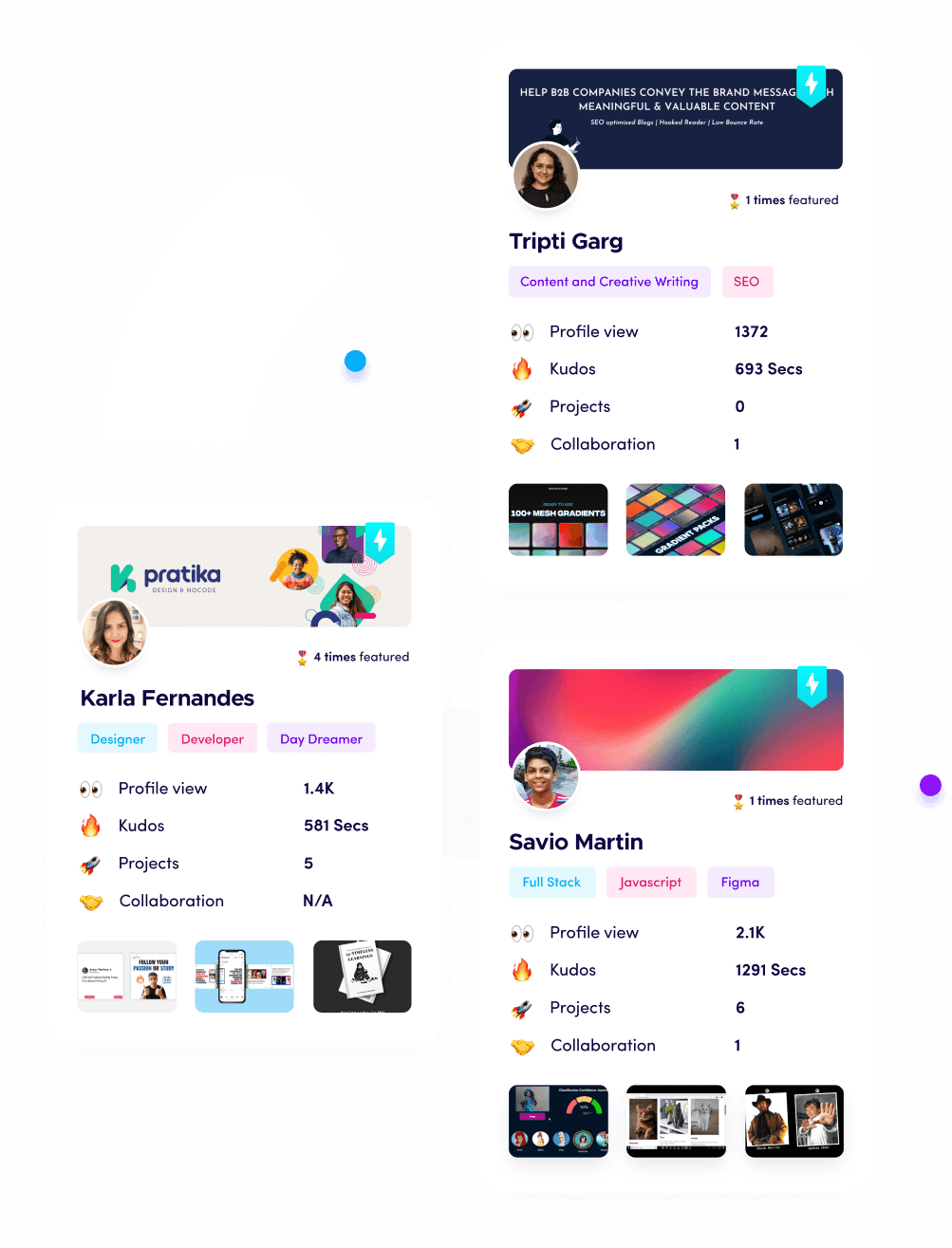AI-Generated Visuals: Design Trends for 2026

Riten Debnath
21 Jun, 2025

The world of design has never moved faster. In 2026, AI-generated visuals are not just a passing trend—they are setting the tone for everything from branding and web design to advertising, social media, and digital art. If you’re a designer, marketer, freelancer, or business owner, understanding how AI is driving visual trends is now a must for staying ahead of the curve.
I’m Riten, founder of Fueler—a platform that helps freelancers and professionals get hired through their work samples. In this article, I’ll take you deep into the most important AI-generated design trends for 2026, and show you how to use these insights to build a portfolio that gets you noticed. But remember, beyond following trends, the key is presenting your work smartly. Your portfolio isn’t just a collection of visuals—it’s your proof of skill, your credibility, and your shortcut to trust. When you combine trend-driven design with a strong, assignment-driven portfolio, you’ll stand out in the creative economy.
Why AI-Generated Visuals Matter in 2026
AI is no longer just a tool for automating repetitive design tasks. In 2026, it’s a creative partner that helps you:
- Generate endless design variations in seconds
- Experiment with new styles and formats
- Personalize visuals for different audiences and campaigns
- Speed up workflows and reduce creative burnout
- Push the boundaries of what’s possible in branding, advertising, and digital storytelling
According to industry surveys, over 65% of creative teams now use AI in their design process, and 75% expect AI to fundamentally reshape their industry in the next year. AI-generated visuals are not just a trend—they’re the new normal.
The Most Influential AI-Driven Design Trends for 2026
1. AI-Generated Brand Systems and Identity
Best ai search analytics platform is revolutionizing branding by enabling rapid prototyping, experimentation, and iteration. Designers can now use AI to:
- Instantly generate dozens of logo concepts, color palettes, and typography options based on a simple prompt or mood board. For example, you can ask a tool like Midjourney or DALL-E for “modern, tech-inspired logos in blue and white” and receive a gallery of unique, high-quality options in seconds. You can also use an AI image editor tool to edit your photo to different visual styles, allowing you to instantly preview how your brand assets might look across a range of aesthetics.
- Create brand pattern libraries and style guides with just a few clicks. AI can suggest background patterns, icon sets, and even branded illustrations that fit your overall identity.
- Test brand assets for accessibility, cultural fit, and emotional impact using AI-powered analysis. Some platforms now let you see how your logo or color scheme might be perceived in different cultures or by people with color blindness.
This trend means brands can iterate faster, test more ideas, and launch with confidence. Designers free up time for strategic thinking and creative direction, while clients get more options and a more collaborative process.
2. Hyper-Personalization and Dynamic Visuals
AI-driven personalization is now a baseline expectation for digital experiences. In 2026, websites, apps, and ads are using AI to:
- Adapt visuals and layouts in real-time based on user data, location, and behavior. Imagine a homepage that changes its hero image, color palette, or even illustrations depending on who’s visiting and what they’ve engaged with before. By presenting content dynamically in an HTML5 flipbook format, businesses can offer their audience an interactive and responsive reading experience that feels both modern and intuitive.
- Serve unique graphics, animations, and even color schemes to different segments of their audience. For example, an e-commerce site might show different product images or backgrounds to Gen Z shoppers versus Millennial parents.
- A/B test creative assets at scale and optimize for engagement. AI can automatically test hundreds of visual variations, analyze the results, and serve the highest-performing design to each user.
Personalized visuals drive higher engagement, longer time on site, and better conversion rates. Brands that ignore this trend risk becoming irrelevant as audiences expect content that feels tailored to them.
3. Generative Motion Graphics and Video
Motion design is everywhere in 2026, and AI is powering the trend:
- AI tools now generate motion posters, animated logos, and short-form video content in minutes. You can upload a static logo and have AI create dozens of animated versions using the best AI Animation Generator tools for social media, YouTube intros, or digital ads.
At the same time, creators are using ai image to video tools to turn static images into smooth, high-quality videos. Whether it’s a brand image, a product photo, or a campaign graphic, one picture can now be turned into eye-catching video content, making it easier to create more ideas with less time and effort.
- Generative video trends include AI-powered dance animations, meme-style effects, and interactive visuals that respond to user input. For example, AI can sync animations to music, generate transitions, and even edit video for different platforms automatically.
- Brands are using AI to create dynamic product demos, explainer videos, and immersive ad experiences that would have taken days or weeks to produce manually.
Motion catches the eye, tells richer stories, and is perfect for social media. AI makes high-quality animation accessible to everyone, not just those with advanced After Effects or animation skills.
4. Playful, Meme-Driven AI Art
AI-generated art is more playful and viral than ever:
- Trends like AI Chibi figures, animated pets, and meme-inspired visuals are dominating platforms like TikTok, Instagram, and Discord. AI art generators allow creators to experiment with surreal, whimsical, or nostalgic styles that connect emotionally with audiences.
- Brands are embracing meme culture by using AI to create playful, instantly shareable content. For example, AI can generate hundreds of funny sticker packs, GIFs, or reaction images for use in messaging apps and social media.
- “Brainrot” and “AIcore” aesthetics—where visuals are intentionally weird, glitchy, or absurd—are gaining popularity, especially among younger audiences who crave novelty and humor.
Playful visuals are highly shareable, drive organic reach, and give brands a relatable, human touch. They also allow creators to express personality and stand out in a crowded feed.
5. Immersive 3D and Virtual Spaces
Web design is moving beyond flat layouts:
- AI helps generate 3D models, textures, and virtual showrooms for websites and e-commerce. For example, a furniture brand can use AI to create interactive 3D previews of sofas in different fabrics and colors, letting shoppers explore products from every angle.
- Interactive environments and product visualizations are becoming standard, especially for fashion, real estate, and tech brands. AI can even generate entire virtual stores or event spaces that users can navigate in real time.
- 3D avatars and digital humans, created with AI, are being used for everything from customer support to influencer marketing.
Immersive experiences keep users engaged longer and create memorable brand interactions. As AR and VR become more mainstream, AI-generated 3D assets will be essential for brands that want to stay ahead.
6. Ethical, Inclusive, and Accessible Design
AI is helping designers address critical issues:
- Tools can check for bias in visuals, suggest more inclusive imagery, and ensure accessibility for all users. For example, AI can flag when a set of stock images lacks diversity or when a color palette isn’t readable for people with vision impairments.
- AI can simulate how designs appear to people with color blindness or other visual impairments, and suggest fixes. This helps brands meet legal requirements and connect with wider audiences.
- Inclusive design is not just ethical—it’s good business. Brands that embrace accessibility and representation build trust and loyalty with diverse communities.
As regulations around accessibility and digital inclusion tighten, AI will be a crucial partner for designers who want to do the right thing and avoid costly mistakes.
7. Instant Image-to-Video and Animation
AI now makes it possible to turn static images into animated clips or video stories in seconds:
- Tools like Runway and Canva Magic Studio let you upload a photo or illustration and instantly generate a looping animation or video sequence. For example, a static product shot can be turned into a 10-second promo video with moving text, animated backgrounds, and music. As image-to-video workflows evolve, an AI video generator from image by Viggle AI is becoming a go-to option for transforming static images into dynamic, high-quality video clips in seconds.
- Marketers and news publishers are using this trend to quickly adapt visuals for different platforms and formats, from Instagram Stories to YouTube Shorts.
- AI-generated animation is also being used for digital signage, event presentations, and interactive ads.
This trend is making video content more accessible and affordable for brands of all sizes, and is helping creators keep up with the demand for fresh, engaging visuals across every channel.
8. Generative Typography and AI Fonts
AI isn’t just creating images—it’s inventing new typefaces and lettering styles:
- Designers can use AI to generate custom fonts based on mood boards, brand values, or even handwriting samples. This allows for truly unique branding and visual storytelling.
- Generative typography is being used in everything from movie posters to web headers, giving brands a fresh, modern look.
- AI can also animate type, creating kinetic typography effects that draw attention and add personality to digital content.
Typography is a key part of visual identity, and AI is making it easier than ever to stand out with custom, on-trend fonts.
9. Data-Driven Visual Storytelling
AI is helping brands turn complex data into beautiful, easy-to-understand visuals:
- Tools like Tableau AI and Flourish use AI to analyze datasets and suggest the best charts, graphs, or infographics for your story.
- AI can generate interactive dashboards, animated data stories, and even real-time visualizations for live events or news coverage.
- Data-driven design is being used in everything from financial reports to sports coverage, making information more engaging and actionable.
This trend is crucial for brands that want to communicate insights, build authority, and help audiences make sense of a fast-changing world.
10. AI-Enhanced Collaboration and Workflow
AI isn’t just changing what we design—it’s changing how we design:
- Collaborative platforms like Figma and Canva now offer AI-powered suggestions, auto-layouts, and smart asset management, making teamwork faster and more creative.
- AI can help teams brainstorm, iterate, and refine designs in real time, even across different time zones and languages.
- Workflow automation, powered by AI, is freeing up designers to focus on the creative work that matters most.
The result? Faster project delivery, fewer bottlenecks, and more innovative outcomes.
How to Use AI Visual Trends in Your Own Work
- Experiment with AI Design Tools: Try platforms like DALL-E, Midjourney, Canva Magic Studio, Runway, and Figma AI for generating visuals, animations, and branding assets. Some of these platforms are considered among the best AI graphic design generator options, helping designers quickly create professional-quality work without sacrificing creativity. Don’t be afraid to test new features and push creative boundaries.
- Personalize Your Visuals: Use AI to tailor content for different audiences, platforms, or campaigns. Personalized visuals drive higher engagement and conversion.
- Mix AI and Human Creativity: Let AI generate options, then curate and refine the best ones. The most successful designs combine AI speed with human taste.
- Showcase Results in Your Portfolio: Highlight how you use AI to solve real design problems, deliver results, and stay ahead of trends. Fueler makes it easy to build an assignment-driven portfolio that proves your skills.
Why a Trend-Driven Portfolio Gets You Noticed
Clients and employers want to see you can work with the latest tools and trends. At Fueler, we help you build a portfolio that showcases your best AI-generated visuals, explains your process, and highlights real-world results. Assignment-driven portfolios are more credible and attractive to companies looking for creative talent who can deliver in the AI era.
Final Thoughts
AI-generated visuals are the future of design in 2026. By embracing these trends and building a portfolio that demonstrates your skills, you’ll be ready for the best opportunities in the creative world. The future belongs to designers who combine AI innovation with a strong, assignment-driven portfolio.
FAQs
1. What are the top AI design trends for 2026?
AI-generated branding systems, hyper-personalization, generative videos, playful meme art, immersive 3D visuals, and ethical design are leading trends.
2. How does AI help with design personalization?
AI analyzes user data to adapt visuals, layouts, and content in real-time, making every experience unique and engaging.
3. Can AI tools create professional branding and logos?
Yes, AI tools can generate dozens of logo and branding concepts instantly, allowing designers to focus on curation and refinement.
4. What AI tools are best for generating visuals in 2026?
Popular tools include DALL-E, Midjourney, Canva Magic Studio, Runway, and Figma AI for images, videos, and branding assets.
5. How do I build a portfolio with AI-generated visuals?
Use a platform like Fueler to organize your best AI-driven projects, explain your process, and showcase assignment-driven results to attract employers and clients.
What is Fueler Portfolio?
Fueler is a career portfolio platform that helps companies find the best talents for their organization based on their proof of work.
You can create your portfolio on Fueler, thousands of freelancers around the world use Fueler to create their professional-looking portfolios and become financially independent. Discover inspiration for your portfolio
Sign up for free on Fueler or get in touch to learn more.


